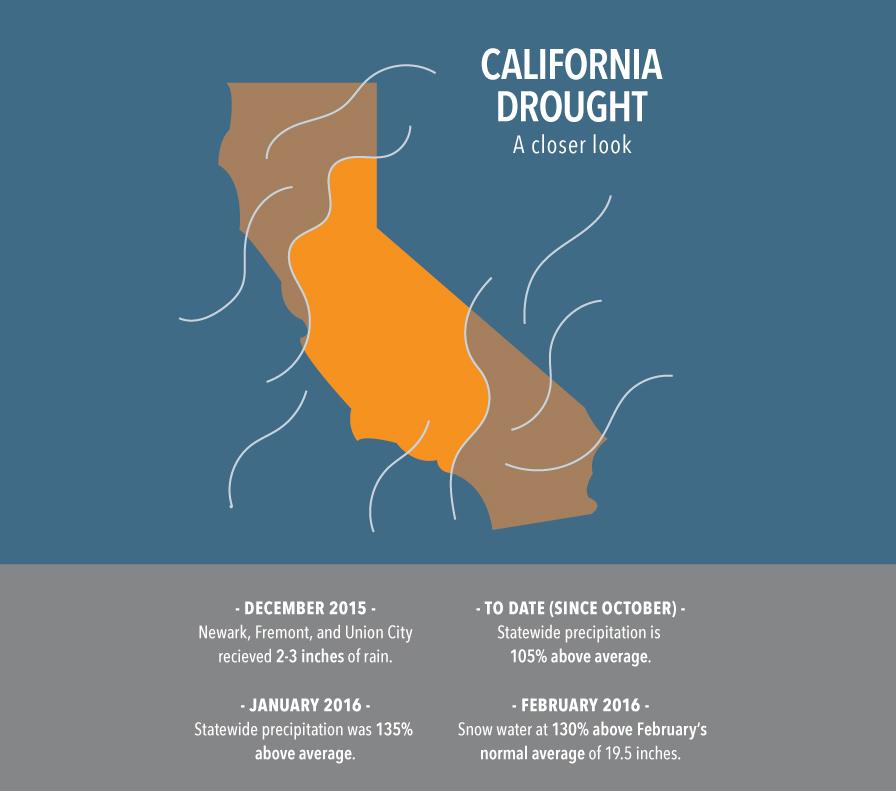Does more rain and snow equal rising water levels?
February 18, 2016
It isn’t a secret that California has recently experienced one of the worst droughts in over 100 years.
However, that changed this past month: Bay Area streets flooded, coastal properties were destroyed and traffic increased, as the region saw above-average levels of rain and snow in the region.
Stephanie Nevins, the county’s water conservation supervisor, stated that to date this year, precipitation is on the high side of Alameda County’s Water District’s area.
“But we had four very dry years,” Nevins said. “It is going to take more than a high average to pull us completely out of the drought, but of course it has helped us.”
According to the National Oceanic and Atmospheric Administration, the tri-city area — Newark, Fremont, Union City — received two to three inches of rain in December, up from less than .10 inches in December 2011, when the drought started.
Elizabeth Scott, public affairs spokeswoman for California Department of Water Resources, stated that historically California’s multi year droughts have ended by with an above-average water year. A “water year” begins in October and to date the statewide water year precipitation is 105 percent above average, Scott explained.
January was an above average precipitation month for California, with a statewide precipitation was 135 percent of average, according to the California Climate Tracker at the Western Region Climate Center.
Although this put a huge dent in our current drought problem, California is a long way from drought free.
This El Niño season is now tied with with the one from 1997-98 for the strongest on record, Mike Halpert, deputy director of the Federal Climate Prediction Center, explained to the Associated Press on Jan. 5.
The end of a drought is determined by many factors. In California’s case, it relies heavily on snowpack, the total amount of snow and ice on the ground.
California’s water is supplied in part by the snowpack in the Sierra and Cascade mountain ranges. After winter flood season has passed and the warmer months come, snowmelt runoff for later in the season can begin, Scott said.
According to the California Department of Water Resources, in a normal year the snowpack supplies about 30 percent of California’s water needs as it melts in the spring and early summer. The greater the snowpack water content, the greater the likelihood California’s reservoirs will receive ample runoff as the snowpack melts to meet the state’s water demand in the summer and fall of 2016.
On Feb. 2, the DWR conducted their second snow survey of the winter at the Phillips snow course, which lies 90 miles east of Sacramento. Surveyors found the snowpack water content there much improved compared to the early February survey last year.
The team led by Frank Gehrke, chief of the California cooperative snow surveys program, found snow water to be 130 percent above Februarys normal average of 19.5 inches since 1966, this year.
Last year, Gehrke recorded a water content of just 2.5 inches in the February survey. Both the depth and water content at Phillips today were the highest since 2005 with other 10 times more water content, according to the DWR.
Although the state has been blessed with rising rain and snow levels, it is still important for Californians to conserve as much water as possible.
A press release from the DWR urges that, “Each individual act of conservation such as letting the lawn go brown or replacing a washer in a faucet to stop a leak, makes a difference over time.”

















